64 F. high temperature at KMSP on Friday.
74 F. average high on September 11.
57 F. high on September 11, 2014.
September 11, 1980: 3.35 inches of rain fell in the St. Cloud Area.
September 11, 1942: A line of thunderstorms raced across Minnesota at 70 mph, destroying 651 barns in a 30 mile wide, 180 mile long path.
September 11, 1931: Summer still had its grip on Minnesota with 111 degrees at Beardsley.
September 11, 1931: The daytime high in St. Cloud was 96 degrees.
September 11, 1900: The soggy remains of the Galveston Hurricane brings 6.65 inches of rain to St. Paul over two days.
September 11, 1807: Thick smoky weather noted at Pembina. Source: Twin Cities National Weather Service.
Almost Perfect"Who
cares about the clouds when we're together? Just sing a song and bring
the sunny weather" sang Dale Evans. By all standard metrics (including
common sense) it has been an exemplary summer, with just the right mix
of sunshine, warmth and moisture.
The Minnesota State Climate
Office and DNR have a "Summer Glory Index" that factors temperature, dew
point and precipitation. It was the 3rd best summer since 1903. Only
2008 and 1922 were better. Of course "good weather" is subjective; a
good day for a farmer might be a rough day on the golf course. But let's
agree that the summer of 2015 was considerably better than average.
The
Arrowhead is probably waking up to frost this morning. A touch of
October early today gives way to July flashbacks early next week as
daytime highs nudge 80 degrees. Dry weather persists into midweek;
models hint at a few waves of showers
Thursday &
Friday, followed by another comfortable front and lukewarm sunshine next weekend.
To be honest I'm a little bored, but that bodes well for your outdoor plans.
Minnesotans
get a lot of grief for staying put when arctic winds begin to howl. But
remind your friends how spectacular a Minnesota summer can be.
A Glorious Summer, All Things Considered.
No extended heat waves, no monster tornadoes, plenty of sunshine and
reasonable warmth - what's not to like? Factoring in temperature
extremes, dew points and precipitation the
Minnesota DNR
and Climate Office has computed that this summer was the third best on
record (since 1903). Only 1922 and 2008 were better. Spread the word.
Sign Of The Times.
A frost advisory is posted early this morning for the Minnesota
Arrowhead and northern Wisconsin. Clear skies, dry Canadian air and
light winds will conspire to accelerate radiative cooling, meaning
frosty pockets from Sandstone, Tower and Ely to Rhinelander. Map:
Aeris Pulse.
Geomagnetic Storm = Aurora Potential.
It's worth a shot - skies should be crystal clear again tonight with
low humidity and excellent visibility. There's no way to predict the
Northern Lights in advance, but Friday's storm on the sun has raised the
odds of seeing the Aurora Borealis. More details via
spaceweather.com: "
During
the early hours of Sept. 11th, a high-speed solar wind stream hit
Earth's magnetic field. The impact sparked a strong (Kp=7) geomagnetic
storm and Northern Lights in the USA as far south as Wisconsin and Washington State.
In Alaska, "the entire sky was moving like sea waves in colors of green
and purple," reports aurora tour guide Marketa Murray, who took this
picture outside Fairbanks..."
Photo credit above: Ronn and Market Murray.
Aurora Forecast.
The Geophysical Institute
at the University of Alaska updates their aurora predictions every day.
For the latest information on how far south the Northern Lights check
out the latest: "
Auroral activity will be moderate. Weather
permitting, moderate displays will be visible overhead from Inuvik,
Yellowknife, Rankin, and Igaluit to as far south as Whitehorse, Ft.
McMurray, James Bay and visible low on the horizon as far south as
Prince Rupert, Calgary, Minot, Bemidji, Stevens Point, Traverse City and
Quebec City, Canada."
Warming Trend.
I realize you'll need a jacket or sweatshirt this morning, but don't
pack away the shorts just yet. Long range guidance (GFS guidance showing
500mb winds valid Friday evening, September 25) shows a warm ridge of
high pressure straddling the Rockies, keeping Minnesota warmer than
average as we end the month. Map: GrADS:COLA/IGES.
Wet Start to September For Some Parts of Minnesota. Here's the intro to this week's installment of
Minnesota WeatherTalk, courtesy of Dr. Mark Seeley: "
The
first ten days of September have brought a month's worth of rainfall
and more for many locations in Minnesota. The monthly normal rainfall
for September ranges from 2.50 inches to 3.50 inches for most Minnesota
climate stations. Through the first 10 days of this month over 40
climate stations already report rainfall amounts within that range.
Brimson, Eveleth, Floodwood, Two Harbors, and Waseca have already
reported over 4 inches of rain for the month, while Cotton and Keewatin
have reported over 5 inches. On a few days several observers reported
significant thunderstorm rainfalls, in some cases establishing new daily
record rainfalls..."
The U.S. is Still Sweating Out Heat Waves in September. Why?
The growing season is longer; spring arrives earlier, fall lingers
later into the year, and record summer heat is spilling over into
September. Here's an excerpt from
Think Progress: "...
Observational data and climate records make clear that heat waves have already increased in duration and intensity. Climate models have shown that heat waves are “virtually certain”
to get worse as greenhouse gases warm the planet. Higher ambient
temperatures not just during the summer but the spring and fall,
combined with a more intense hydrologic cycle and more frequent blocking
patterns suggest heat waves will become worse. This is not news to
anyone paying attention to global surface temperature records that
continue to fall. Worldwide, 2015 is well on its way to breaking 2014’s record for hottest year ever measured..."
Historic Floods Grip Japan. Those are people out on their balconies being swept downstream, entire homes being pushed off their foundations. Details via
The Independent: "
Record
rainfall in Japan has burst riverbanks, ripped houses from their
foundations and forced over 100,000 people to flee their homes. The
aftermath of Typhoon Etau has also washed tons of radioactive water from
the ruined Daiichi nuclear power plant into the Pacific. In
dramatic scenes reminiscent of the tsunami disaster that struck the
country’s coast in 2011, residents of Joso City, 34 miles north-east of
Tokyo, were rescued from rooftops by Self-Defence Force helicopters..."
El Nino Reaches "Strong" Intensity; Will Dramatically Reshape The World's Weather.
It's not quite as intense as '97; not yet, but forecasts suggest 2-3C
of warming in the Pacific, which could - in theory - make it the
strongest El Nino ever recorded. It's still too early to say. Here's a
clip from an Andrew Freedman article at
Mashable: "
The
periodic climate cycle in the Pacific Ocean known as El Niño has
reached "strong" levels, according to scientists at the Climate
Prediction Center (CPC) in College Park, Maryland. The event commenced
in March and is forecast to have its peak influence on U.S. weather this
winter, before subsiding next spring. It ranks as the 2nd- to
3rd-strongest such event on record for this time of year, as measured by
the ocean temperature departures from average and other metrics,
forecasters said Thursday. It's possible that the ongoing event, which
should peak in the next several months, will eclipse the mother of all El Niño events,
which occurred in 1997-98, as well as another monster El Niño that
occurred in 1982-83. That is not assured, however, as it's not quite
there yet..."
Image credit above: "
Sea surface
temperature anomalies along the equator, showing telltale stripe of
above average ocean waters, a hallmark of El Nino." Image:
Earth Simulator
Parched California Could Benefit By Forecast of Big El Nino. USA TODAY reports on the increased potential for heavy rains from El Nino, although nothing is guaranteed; here's an excerpt: "
A
strong El Niño climate pattern could bring much-needed rain and snow to
drought-stricken California this winter, according to a new federal
forecast out Thursday. In its most certain forecast to date, the Climate
Prediction Center said there's a 95% chance that El Niño will continue
through the 2015-16 winter, and it could rival the strongest El Niño
ever recorded in 1997..."
The Active Hurricane Era That Brought Us Katrina and Sandy May Be Over. Then again, all it takes is one. We'll see if this is a prescient or premature. Here's an excerpt from a good overview at
Capital Weather Gang: "...
The
variations between active and inactive periods appear to be caused by
fluctuations in sea surface temperature patterns across the Atlantic
Ocean, known as the Atlantic Multidecadal Oscillation (AMO). When the
AMO is in its positive phase, there is typically a horseshoe-shaped
pattern in the ocean surface temperatures, with warmer than normal water
in the far northern Atlantic and the tropical Atlantic, and normal or
even cooler than normal temperatures off the East Coast..."
Image credit above: "
Hurricane
Wilma of 2005 was the last major hurricane to make landfall on the U.S.
coast. It came ashore in Florida as a category 3, after weakening from
its maximum intensity of category 5." (NASA)
This Drought Is So Bad That Even Seattle Is Running Out of Water. Grist has the details; here's an excerpt: "
Hey,
Seattle. Remember last winter? How pleasantly warm and dry it was,
almost like you live somewhere reasonable and not in a pool of tepid
water near Canada? Well, you’re paying for it now. In a new article on
Investigate West, reporter Robert McClure looks at the future of the
city’s dwindling supply, and the results are Not Good. Representatives
from Seattle Public Utilities showed McClure models based on simulations
of future climate patterns, and the forecast is quite bleak..."
Image credit above:
Jacksonian/Flickr.
The Mothers of All Disasters. The Atlantic
has a sobering look at worst case disaster scenarios. Katrina was a
walk in the park compared to what could happen; here's an excerpt: "...The
biggest disasters seem so far out of the range of the normal
possibilities of daily life that it’s nearly impossible to even envision
the scale of the destruction and upheaval, even for people who have
survived one. Huge hurricanes could all but wash major cities away.
Earthquakes on the West Coast and even in the center of the country
could knock out power for months, make running water a distant memory,
and deprive residents of the roofs over their heads. A deadly epidemic,
such as the U.S. hasn’t seen in 97 years, could take the lives of tens
of thousands. A terrorist could unleash an improvised nuclear device in a
major city, killing thousands—an event without historical precedent.
The people who try to keep the nation ready for these doomsday scenarios
call them the Maximums of Maximums, or the MOMs..."
Illustration credit: Tom Reichner / Bonita R. Cheshier / Dustie / Leonard Zhukovsky / Shutterstock / Reuters / Zak Bickel / The Atlantic.

El Nino Impacts on Nuisance Flooding. Here's an excerpt of an interview at
NOAA's climate.gov: "...
El
Niño will likely increase the frequency of nuisance flooding days on
both the East and West coasts by anywhere from 25% to 125% compared to
the baseline number of days that would be expected based on recent rates
and long-term trends...During El Niño,
warmer than average surface waters and higher than normal sea levels
persist along the U.S. West Coast. These higher sea levels set the stage
for typical "king tides" and normal winter storms to have a bigger
impact than usual. Along the East Coast, El Niño-related atmospheric "teleconnections" help establish a more zonal (west-to-east) jet stream and storm track, which results in higher-than-normal storm surge frequencies along much of the Mid-Atlantic Coast (see related research by Sweet and Zervas, 2011). As a result, historically both the West and East Coasts experience more nuisance-level flooding during stronger El Niños..."

The Rise, Fall and Future of the Cleantech Industry. Here's an excerpt from a story at
The Carbon Brief: "...
The
development of clean technology is touted as one of the most effective
ways to tackle climate change and other environmental issues. And it is already a multibillion-dollar business. According to figures from consultancy firm Frost & Sullivan presented at the Global Cleantech Summit in
Helsinki this week, the market for clean technology was worth $601bn in
2014. By 2020, the firm predicts this will expand to $1.3tn. With the world likely to sign an emissions-cutting deal in
Paris in December this year, and large economies such as India and
China eager for ways to clean up their air pollution, rivers and land,
it is easy to paint the future of the clean technology in a rosy light..."
Giant Prehistoric Viruses Could Be Awakened by Oil Drilling in Siberian Permafrost. Don't sweat the thundershowers.
VICE News has the details; here's the intro:
"French
scientists have announced the discovery of a giant 30,000-year-old
virus, which was found buried 100 feet deep in the Siberian permafrost —
a thick layer of soil that remains frozen year-round. Mollivirus
Sibericum — "soft virus from Siberia"
— measures 0.6 micrometers, which means that, unlike normal virus
specimens, it can be observed under a regular microscope. Viruses larger
than 0.2 micrometers in diameter are considered "giant" viruses..."
Image credit above: IGS CNRS/AMU. More perspective from
Popular Science.
Minnesota Power Will Build Northland's First Community Solar Garden in Duluth. Here's an excerpt of a story at
Duluth News Tribune: "...
Combined,
the two solar gardens — about 100 solar panels at the smaller site and
4,000 panels at the larger site — will generate enough electricity to
power nearly 200 homes. Both projects were submitted Thursday to the
Minnesota Public Utilities Commission, with approval expected in early
2016, as Minnesota Power moves to comply with a state mandate to produce
1.5 percent of its retail electricity from solar energy by 2020. Of
that solar energy, the state requires at least 10 percent come from
small solar arrays such as community gardens..."
Photo credit above: "
Minnesota
Power announced today that it will build a 40-kilowatt solar array at
Arrowhead Road and Rice Lake Road, near its Herbert Service Station,
that will be generating electricity sometime in 2016." (Photo submitted by Minnesota Power).
End of the Road for Reporters? Robot Reporter Churns Out Perfect, 1000-Word News Story - in 60 Seconds.
OK, but can you teach a robot to stand in front of a green screen and
point to Montana? Probably. Here's an excerpt of a vaguely terrifying
post at
South China Morning Post: "...
Chinese
social and gaming giant Tencent published its first business report
written by a robot this week, ramping up fears among local journalists
that their days may be numbered. The flawless 916 -word article was
released via the company’s QQ.com portal, an instant messaging service
that wields much sway in China, a country now in the throes of an automation revolution.
“The piece is very readable. I can’t even tell it wasn’t written by a
person,” said Li Wei, a reporter based in the southern Chinese
manufacturing boomtown of Shenzhen..."
TODAY: Sunny and pleasant. Winds: W 5-10. High: 69
SATURDAY NIGHT: Clear and cool - possibility of seeing the Aurora Borealis? Low: 50
SUNDAY: Sunny and milder. Winds: S 10-20. High: 76
MONDAY: Warm sun, feels like July. Wake-up: 59. High: 82
TUESDAY: Sticky sun, stiff wind. Wake-up: 62. High: 84
WEDNESDAY: Isolated T-shower possible. Wake-up: 62. High: 81
THURSDAY: Early T-storms, PM sun. Wake-up: 64. High: 78
FRIDAY: Showers, possible thunder. Wake-up: 62. High: 75
Climate Stories....
Study Predicts Huge Sea Level Rise If All Fossil Fuels Are Burned. Justin Gillis at
The New York Times has more details on the latest study; here's the introduction: "
Burning all the world’s deposits of coal, oil and natural gas would raise the temperature enough to melt the entire ice sheet covering Antarctica,
driving the level of the sea up by more than 160 feet, scientists
reported Friday. In a major surprise to the scientists, they found that
half the melting could occur in as little as a thousand years, causing
the ocean to rise by something on the order of a foot per decade,
roughly 10 times the rate at which it is rising now. Such a pace would
almost certainly throw human society into chaos, forcing a rapid retreat
from the world’s coastal cities..."
Photo credit above: "Calving
ice near Paradise Harbor in Antarctica in Jan. 2015. The continent's
ice sheet and the rest of the world's land ice would melt if all the
world's fossil fuels were burned, a new climate study found." Credit Ralph Lee Hopkins/National Geographic Creative
Global Warming Causing Record Rock Falls in the Alps, Experts Warn. Here's the intro to a story at
The Independent: "
A
French expert is predicting a record number of rock falls in the Alps
this year as rising temperatures, thought to be a result of climate
change, cause the permafrost to melt. A report on the website of French newspaper Le Monde
noted that at least 150 rock collapses (described as a rock fall of
more than 100 cubic metres) have been recorded on Mont-Blanc, the
highest peak in Europe, since the summer began..."
Climate Scientists Undermine Their Own Science by Avoiding the Best Case Scenario. But are we willing to gamble on a best case outcome? Are we - collectively - going to take that bet? Here's an excerpt from
Quartz: "...
Perhaps
I cling too strongly to my faith in rationality (my own bias), but I
believe most people can make smart decisions when faced with risk—they
just need to have it explained to them the right way. Conveying risk is
hard but it’s important to do, especially when there is a small, but
serious chance of facing danger. That’s why I was dismayed to read that
several climate scientists, normally a measured bunch who understand
risk and uncertainty better than anyone, are going rogue. Some are
moving off the grid. Others use more forceful language and underplay the uncertainty that still exists..."
Image credit: American Meteorological Society.
Weaning Ourselves Off of Fossil Fuels.
When people realize they can save money, improve their health AND clean
up the air overhead clean, renewable energy will scale. Here's a clip
from
Huffington Post: "...
Thankfully,
this goal is increasingly feasible. Renewable-energy costs continue to
plummet, and many renewable sources are approaching cost parity with fossil fuels. Here in America, wind power is already the cheapest
source of electricity at our disposal. Markets will naturally rely on
renewables more and more as costs continue to fall. This is even more
the case for remote nations with minimal fossil-fuel resources:
Distributed renewables can offer energy independence at a better price..."
Photo credit above: "
Wind power generation farm in Taebaek." Photo Credit:
Flickr
The Republican Plot to Destroy an International Climate Agreement.
New York Magazine has the article; here's the introduction: "
Humanity’s
response to the threat of climate change, like just about every good
thing humanity has ever done, is happening later than it should have.
But the signs are everywhere that it is happening. My story
in the magazine describes how political pressure and technological
innovation are feeding into each other, producing a virtuous cycle of
affordable green energy and stronger willpower to reduce emissions. The
outlier in this story is the Republican Party, which stands apart from
nearly the entire world, with the exception of petro-kingdoms like Saudi
Arabia. Perhaps the most striking thing about the GOP’s strident
opposition to international action is how little an impact world
progress has had upon its policy stance..."
Earth's Ice Is Melting Much Faster Than Predicted. Here's Why That's Worrying. If
anything climate models have been conservative, underestimating the
rate of melting in Greenland and Antarctica, as Jason Box explains at
Huffington Post: "...
Glaciologists became oceanographers when they realized, in 2008, the trigger effect for galloping glaciers was warm pulses
of subtropical waters that undermine glaciers at great depth in the
sea, at the grounding lines where this warm water can invade. Indeed,
ocean warming is arguably the climate change story. The planetary energy
imbalance due to the enhanced greenhouse effect is loading far more heat into the oceans than the atmosphere or land. The world is 70 percent ocean-covered after all. While there were signs of a warming hiatus in air temperatures from 1998 to 2012, the ocean continued to heat up,
an equivalent of four Hiroshima bombs, per second, all day, every day.
The increase is continuing as we load the atmosphere with CO2..."
The Sunniest Climate Change Story You've Ever Read. New York Magazine
has an optimistic look at where things stand, and whether we will find
the will to accelerate into a clean energy future; here's an excerpt:
"...
The cost of transitioning away from
fossil fuels, measured as a share of the economy, may amount to a
fraction of the cost of defeating the Axis powers. Rather, it is the
politics that have proved so fiendish. Fighting a war is relatively
straightforward: You spend all the money you can to build a giant
military and send it off to do battle. Climate change is a problem that
politics is almost designed not to solve. Its costs lie mostly in the
distant future, whereas politics is built to respond to immediate
conditions. (And of the wonders the internet has brought us, a
lengthening of mental time horizons is not among them.) Its solution
requires coordination not of a handful of allies but of scores of
countries with wildly disparate economies and political structures..."


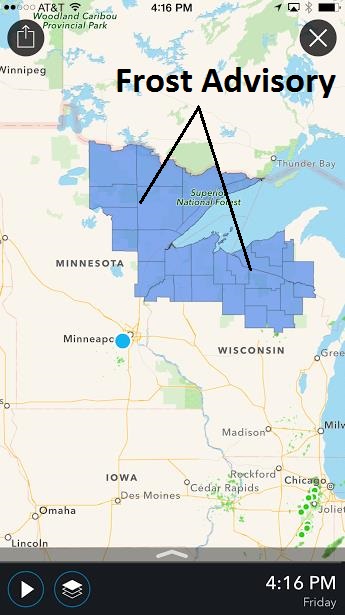

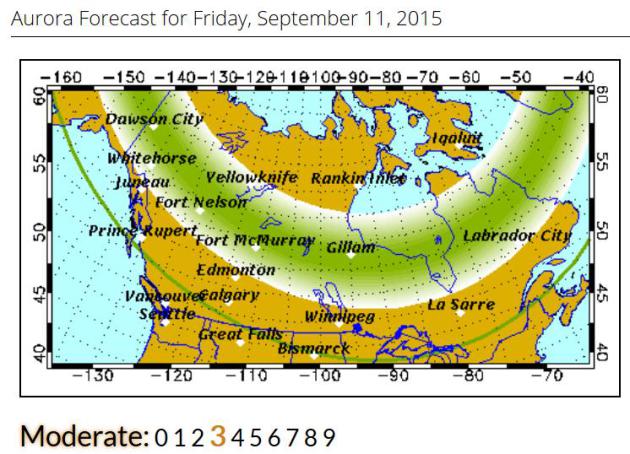

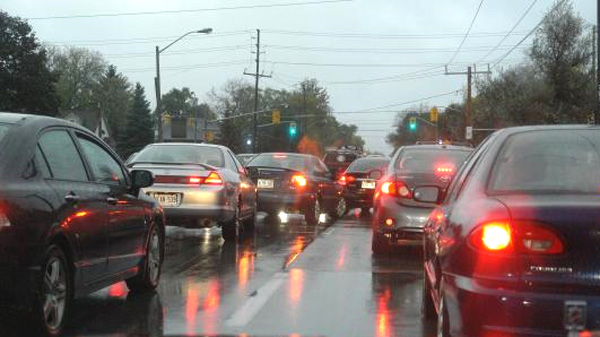
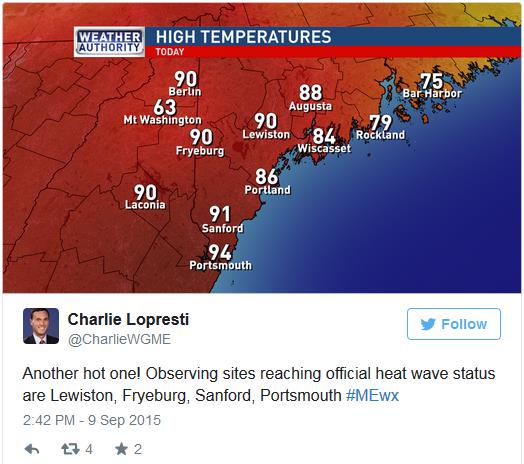
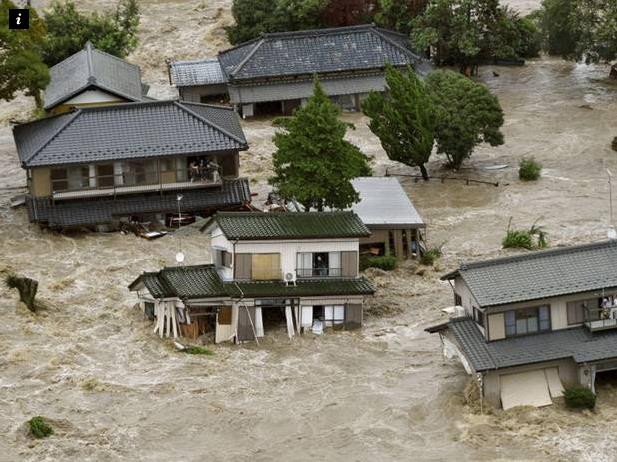
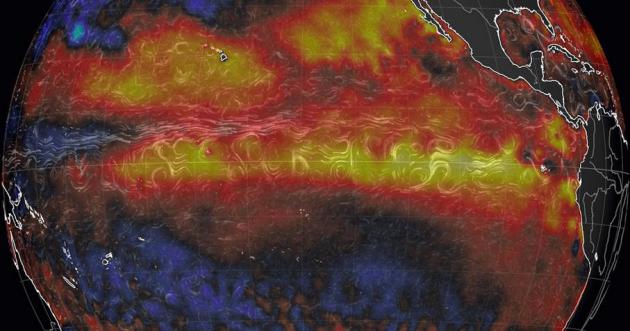
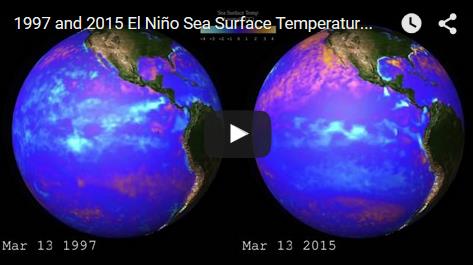

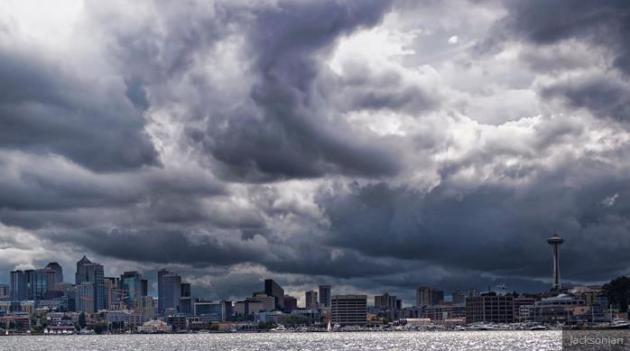
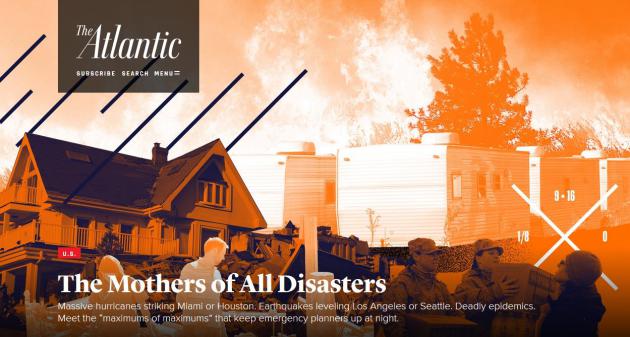






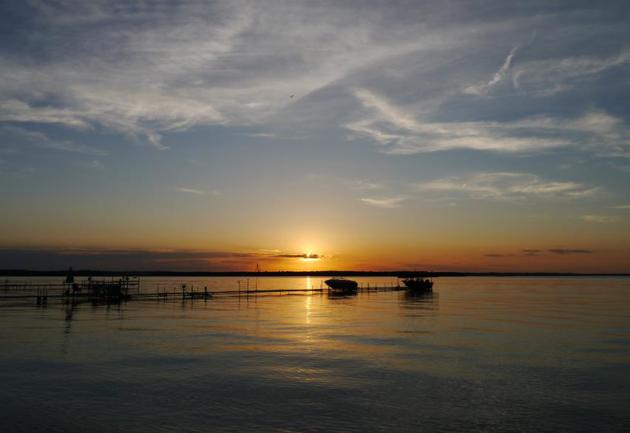
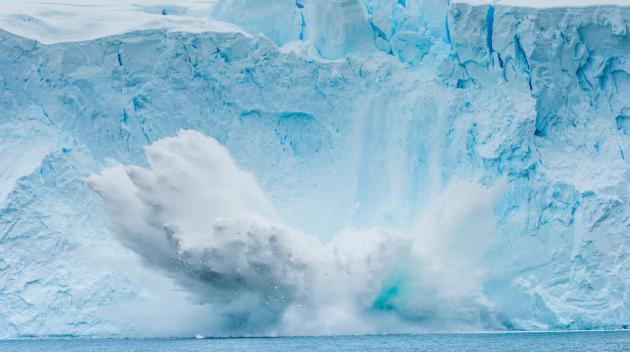
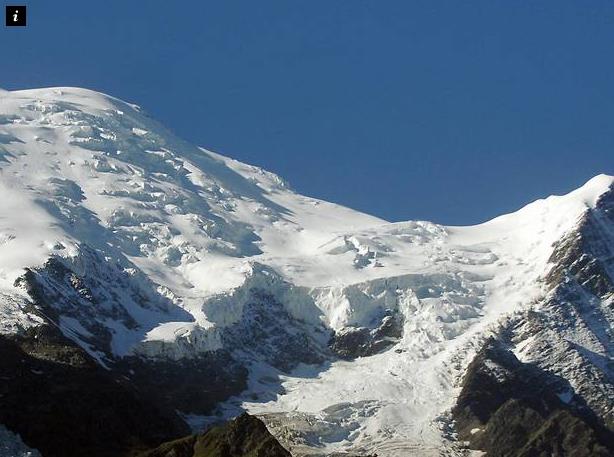
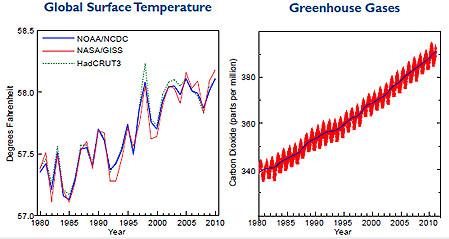




No comments:
Post a Comment